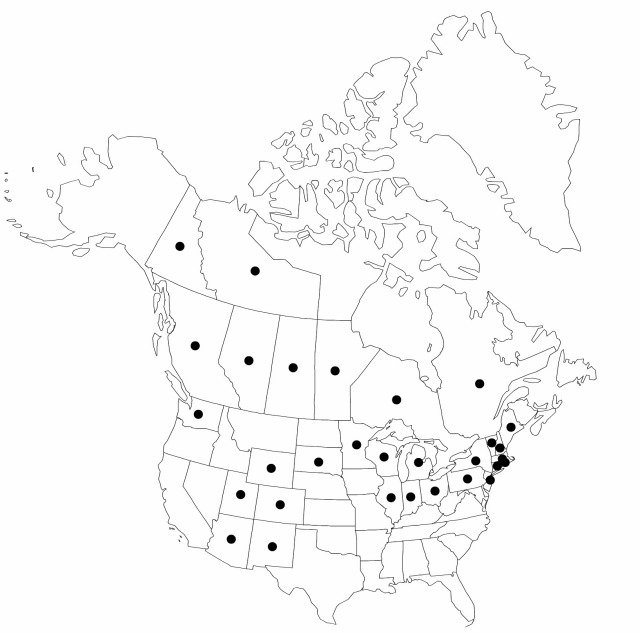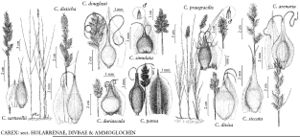Carex siccata
Amer. J. Sci. Arts 10: 278, plate F, fig. 18. 1826.
Culms trigonous, 15–90 cm, scabrous-angled. Leaves: sheath with apex of inner band hyaline, not or barely thickened, concave; ligules 0.7–2.5 mm; blades 1–3.2 mm wide. Inflorescences 1–5 cm; spikes 4–12, ascending, ovate; proximal spikes pistillate; middle spikes often staminate; terminal spike pistillate or androgynous. Pistillate scales reddish-brown with green center and hyaline margins, ovate, 2.8–5.5 mm, shorter than to equaling perigynia, apex acute to acuminate. Perigynia thin-margined, wingless, lanceolate to ovate, 3.9–6.5 × 1.4–2.4 mm; beak 1.2–2.7 mm. 2n = 70.
Phenology: Fruiting May–Jul.
Habitat: Open, sandy oak, oak-pine, or pine forests and savannas, dry prairies, sand dunes, sandy fields, sunny rock outcrops, alpine or subalpine meadows
Elevation: 0–3600 m
Distribution

Alta., B.C., Man., N.W.T., Ont., Que., Sask., Yukon, Ariz., Colo., Conn., Ill., Ind., Maine, Mass., Mich., Minn., N.H., N.J., N.Mex., N.Y., Ohio, Pa., R.I., S.Dak., Utah, Vt., Wash., Wis., Wyo.
Discussion
Though most frequently smooth adaxially and more or less distinctly veined, the perigynia of Carex siccata are quite variable in venation and surface texture. Throughout the range of the species, plants with perigynia veinless or, essentially so, occur occasionally. Those plants have been designated as C. foenea var. enervis Evans & Mohlenbrock. Less commonly, the perigynia are tuberculate adaxially. Such plants have been designated as C. foenea var. tuberculata F. J. Hermann and specimens have been seen from Washington, Colorado, Arizona, and Wisconsin, and reported from Alberta and New Mexico. They probably occur sporadically throughout the range. Rarely, plants are both veinless and tuberculate.
Carex siccata is a very common species of open pinelands in portions of its western range; it becomes very local in much of the easternmost portions of its range.
The name Carex foenea has, unfortunately, commonly been misapplied to the species in some recent literature.
Selected References
None.
Lower Taxa
"shortened" is not a number."thin" is not a number.
